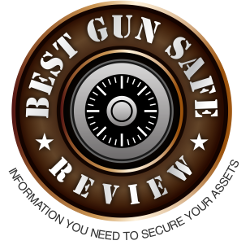The first step to take for any prospective firearm owner is to gain a full understanding of the right to bear arms in their respective country. And in exercising that right, equal importance must be attached to learning and abiding by all applicable federal, state (or provincial), and local laws.
This is a basic primer for the rights and requirements to obtain a firearm in Canada, Mexico, and Australia. If you are considering applying for a permit to obtain a firearm, you must embark on your own due diligence for such a decision.
Canada
Canadians are not granted the right to own a gun by their country’s constitution. Assault weapons and automatic weapons of all kind are prohibited, except those grandfathered in by having been registered prior to 1978.
Gun owners must first apply for a license and submit to a background check, although a genuine reason is not necessary except in the cases of restricted firearms. Canadians as young as 12 can obtain a gun license, though with many limitations for those under 18. Those seeking a license must also provide third-party character references for all types of firearms.
Authorities will also conduct an advisory interview with the applicant’s partner, spouse, or next of kin. Any domestic violence conviction will result in the immediate revocation of the license.
Despite the restrictive legislation, Canadians own nearly 10 million guns.
Mexico
Article 10 of the Mexican constitution states: “The inhabitants of the Mexican United States have the right to keep arms at their houses – as long as such weapons are meant to be use for self protection and to legitimately defend the bearer against an aggression – except those prohibited under federal law and those reserved for the armed forces and the national guard.”
However, Article 10 also restricts this right, stating: “Federal law will determine the cases, conditions, requirements and places in which the carrying of arms will be authorized, and in practice, the civilian ownership of firearms has been relatively tightly restricted.”
(per GunPolicy.org).
Despite the numerous high-profile homicides in Mexico’s prolonged drug war, gun ownership is a complex process. Owning a gun requires a license, and a genuine reason must be provided, such as, “hunting, target shooting, rodeo riding, collection, personal protection, or employment.” Gun owners must be at least 18 years old and submit to a background check, while also providing third-party character references (for pistols and revolvers). Even after getting the license, gun owners must re-apply for the permit every two years, and the qualification process starts over anew.
Penalties for illegal possession of a firearm can result in as many as seven years in prison.
Australia
Australia stands as a very unique case in the international scope of gun control. After being permissive for virtually their entire history, legislation underwent a sea change in the mid-‘90s as firearms being harshly regulated on the heels of a perceived spike in gun violence.
According to the Sporting Shooters’ Association of Australia, just 765,000 Australians (or 5.2 percent of the population) owned a firearm as 2007.
The country does not grant citizens any entitlement to gun ownership. Firearms are permitting for private collection (usually if made inoperable), hunting, culling overpopulated or nuisance species, and target practice. All other genuine reasons for submitting a permit to own a firearm are subject to extreme restriction and scrutiny.
Licensees must wait for a mandatory 28-day period, and also ensure properly secure storage of the firearm. The serial number is also taken and registered in the name of the permit holder.
Gun laws in Australia became much more restrictive under the 1996 National Agreement on Firearms. Under Prime Minister John Howard, following a spate of headline-gripping gun homicides, the government adopted many of the restrictive measures suggested in a 1988 report conducted by the National Committee on Violence.
The first of several massacres that prompted this occurred in 1984. Known as the Milperra massacre, it was a bloody clash between biker gangs in New South Wales. Other massacres include those at Hoddle Street and Queen Street—
both in Melbourne in 1987, four months apart—as well as the 1991 Strathfield massacre at a shopping mall in Sydney.
The real catalyst was the Port Arthur massacre in 1996. A mentally disturbed man killed 35 people and wounded 23 at a historic notorious former prison colony that had been converted into a shopping district and tourist destination.
Howard’s government took swift action with sweeping firearms regulations, making it one of the world’s most restrictive countries on gun ownerships.
Today, in the Australian states, the maximum penalty for possession of an illegal firearm is 14 years prison. The territories have slightly different regulations, with some stipulating a fine of up to 60,000 Australian dollars. The government also instituted amnesty, collection, and seizure programs, collecting upwards of a million total firearms, which were subsequently destroyed.
Thanks for visiting www.bestgunsafereview.com, if you liked this article please use our social buttons to give us the thumbs up.

Comments are closed.